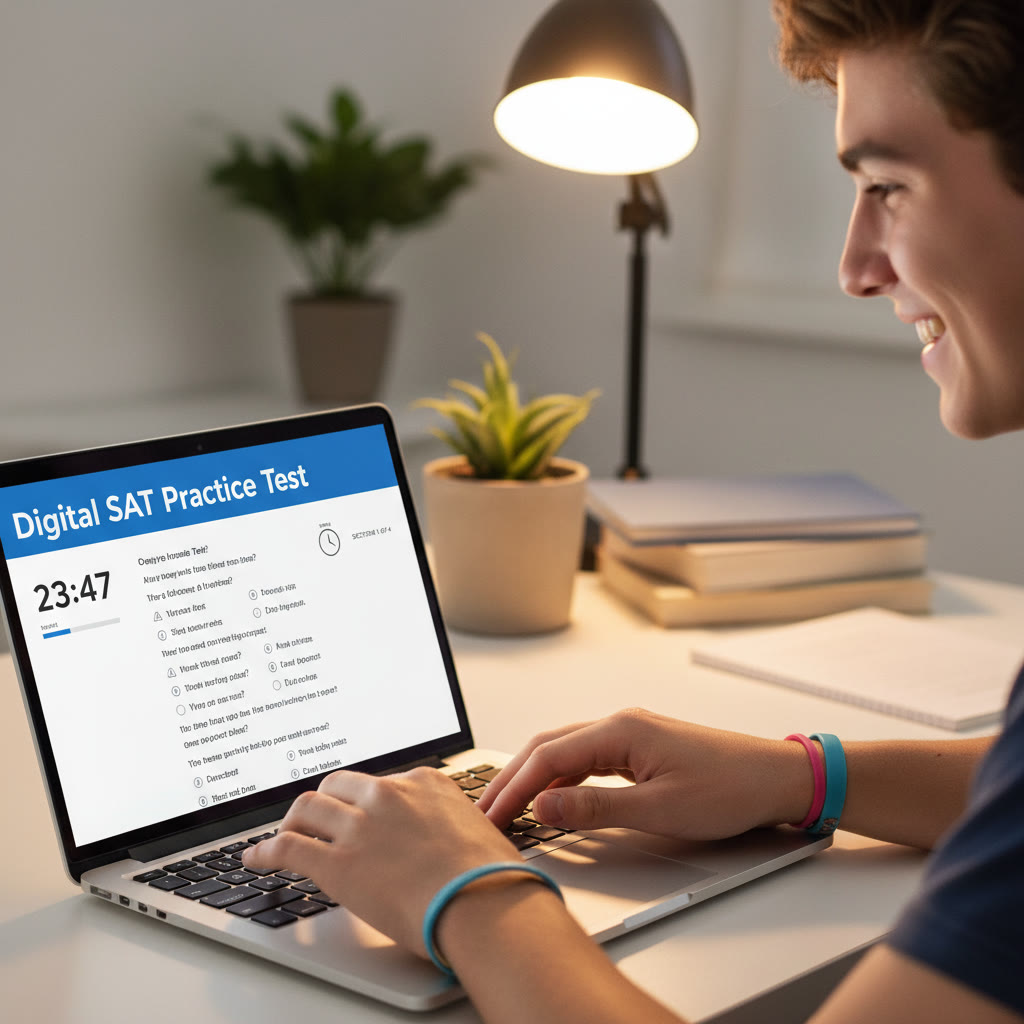Introduction: Why the SAT Still Matters for CU Boulder (and How to Approach It Calmly)
If you’re applying to the University of Colorado Boulder (CU Boulder), you’ve probably heard the words “SAT,” “test optional,” and “holistic review” tossed around. That can sound confusing — especially when colleges shift their testing policies. Let’s simplify it: CU Boulder looks at academic achievement in many ways, and a strong SAT score can still open doors for admission and scholarships. But more importantly, your approach to the Digital SAT and the rest of your application will make the real difference.

Quick Snapshot: What CU Boulder Usually Looks For
Admissions officers at state flagships like CU Boulder evaluate applicants on multiple dimensions: GPA and course rigor, standardized test scores (if submitted), extracurriculars, essays, recommendations, and context (such as school resources or family background). Historically, the middle 50% SAT range for admitted students falls into a competitive bracket; think of this as the score band where most incoming students land. If your score is inside or above that range, great — but if it’s below, there are still many ways to present a strong application.
CU Boulder SAT Score Range: What to Aim For
The SAT range that represents the middle 50% of admitted students gives you a helpful target. For many applicants to CU Boulder, that range sits in the mid-to-high end of the national distribution. Use it as a guide for setting realistic practice goals.
| Category | Recommended Target | Why it matters |
|---|---|---|
| Safety target | Score at or above the lower end of CU Boulder’s middle 50% | Increases likelihood of admission compared to applicants below the range |
| Competitive target | Score near the upper end of the middle 50% | Stronger for selective majors and merit scholarships |
| Stretch target | Above the middle 50% | Helps stand out for honors programs and competitive scholarships |
Understanding CU Boulder’s Testing Policy (In Plain Language)
Testing policies have been in flux across higher education. CU Boulder, like many public research universities, has used a combination of approaches — sometimes test optional, sometimes test preferred — based on admissions cycle and institutional decisions. What this means for you is simple: always confirm the current policy for your application year on CU Boulder’s admissions page, but plan so you have options.
- If CU Boulder is test-optional during your cycle: You can choose whether to submit SAT scores. Submit them if they boost your application or help with scholarships; otherwise, rely on GPA, coursework, essays, and extracurricular impact.
- If CU Boulder is test-required: You must submit SAT (or ACT) scores. Prepare with the Digital SAT format in mind and aim for a score that matches or exceeds the middle 50% range for admitted students.
- Even when optional, some departments and scholarship committees may still consider test scores for placement or awards. Know the specifics for your intended major.
How to Make the Test-Optional Choice Strategically
Not all test-optional applicants benefit from skipping scores. Think of submitting scores as another storytelling tool. If your GPA is strong but your school’s curriculum is unusually rigorous and a high SAT would confirm your readiness, submit it. If your SAT is lower but your GPA, essays, and activities are stunning, you might choose to focus on other application elements.
The Digital SAT: What’s Different and How to Prepare
The SAT is now delivered in a digital format, and that changes both the logistics and strategies. Here’s what matters most for CU Boulder applicants:
- Familiarize yourself with the digital interface: navigation, tools, and how the adaptive sections work.
- Practice on official digital practice materials so you understand timing and question types.
- Simulate test-day conditions: device use, headphones when allowed, and uninterrupted time blocks.

Study Strategy: Quality Over Quantity
Short, focused practice sessions beat marathon cram days. For the Digital SAT, aim for consistent cycles of practice that include timed sections, review of errors, and targeted skill work (vocabulary-in-context, data interpretation, grammar in context, algebra and advanced math skills). Set weekly measurable goals: for example, reduce careless errors by 50% in four weeks, or bring your Evidence-Based Reading & Writing average up by 30 points.
Building a Balanced Application: SAT Is One Piece of the Puzzle
CU Boulder uses a holistic review. That means while a solid SAT can help, so do other elements:
- High school GPA in context of course rigor (AP, IB, honors).
- Compelling essays that highlight your voice, resilience, and intellectual curiosity.
- Meaningful extracurriculars: leadership, sustained commitment, and impact.
- Strong letters of recommendation, if requested or allowed.
Practical Tip: Turn a Weakness into a Story
If your SAT score doesn’t reflect your academic potential, use other areas to demonstrate readiness: a research project, a community service initiative, or a portfolio of STEM or creative work. Short supplemental essays or the personal statement are your platform to explain growth, unusual circumstances, or a clear passion for your field.
Scholarships and Merit Aid: How the SAT Can Help
Many merit scholarships at public universities consider standardized test scores alongside GPA. A higher SAT can unlock additional funding or put you in a stronger position for department-specific awards. For CU Boulder applicants, think strategically about whether submitting a test score could improve your scholarship opportunities.
| Scholarship Type | How SAT Helps | Action |
|---|---|---|
| Automatic merit awards | Often use GPA + SAT/ACT to place applicants into tiers | Submit scores if they strengthen your tier placement |
| Departmental scholarships | May consider test scores for competitiveness | Check departmental pages; ask admissions or advisors |
| Holistic scholarships | Use scores as supporting evidence rather than sole criteria | Pair scores with project portfolios, essays, and recommendations |
Application Timeline and Practical Checklist for CU Boulder Applicants
Here’s a compact timeline you can adapt to your personal schedule. Begin early and give yourself margin for retakes, updated materials, and scholarship deadlines.
- Junior year (spring/fall): Take PSAT, begin Digital SAT practice, and set a target score based on CU Boulder’s middle 50%.
- Summer before senior year: Deepen subject knowledge, begin drafts of personal statements, and map extracurricular highlights.
- Senior year (early fall): Sit for the SAT if required or if your practice scores show room for improvement or scholarship advantage.
- Senior year (late fall/winter): Review letters of recommendation, finalize essays, and submit application by CU Boulder’s deadlines.
- After submission: If you’re waitlisted or deferred, consider sending an updated transcript, senior-year grades, or fresh test scores if they improve your profile.
Checklist: Documents and Actions
- Official transcript(s) and school profile.
- Digital SAT scores (if submitting) or confirmation of test-optional choice.
- Personal statement and any required supplemental essays.
- Resume of activities, awards, and leadership roles.
- Letters of recommendation (if applicable).
- FAFSA and financial aid documents (file early).
Real-World Example: Two Different Applicant Paths to CU Boulder
Example 1: Emma — The Scholar with a Strong SAT
Emma is applying for a STEM major. She has a 3.9 GPA, took AP Calculus and Physics, and scored within the upper end of CU Boulder’s SAT middle 50%. Her strong SAT helped confirm her quantitative readiness, and she used her supplemental materials to showcase a summer research internship. The outcome: a straightforward admission and a departmental scholarship.
Example 2: Marcus — The Creative with a Compelling Story
Marcus’s SAT is slightly below CU Boulder’s middle 50%, but he has exceptional portfolio work in digital media, leadership in a community arts program, and personal essays that reveal resilience and perspective. He chooses to focus on narrative and portfolio strength. The outcome: admission through holistic evaluation, with an emphasis on his unique contributions to campus life.
How to Study Effectively for the Digital SAT: A Week-by-Week 12-Week Plan
If you have 12 weeks until your target test date, this blueprint will help you organize time without burning out. The plan balances practice tests, targeted skill work, and rest days.
- Weeks 1–2: Diagnostic test, set realistic score goals, and build a study calendar.
- Weeks 3–5: Focused content practice (reading strategies, grammar rules, algebra and heart of algebra topics).
- Weeks 6–8: Take two full-length digital practice tests; review every error thoroughly.
- Weeks 9–10: Target weaknesses identified in practice tests, increase timing drills.
- Weeks 11–12: Light practice, one final full practice test, and test-day preparation rituals (sleep, food, logistics).
Tools and Support: When to Bring in a Tutor
Many students benefit from focused guidance at different stages — if you’re stuck on a persistent weak area, or you need accountability during a busy senior year, 1-on-1 tutoring can accelerate progress. Personalized tutors adapt to your learning style, create tailored study plans, and often bring AI-driven insights to quickly identify patterns in your mistakes. Sparkl’s personalized tutoring, for example, offers one-on-one guidance, tailored study plans, expert tutors, and AI-driven practice feedback — a helpful complement if you want a structured, individualized approach without trial-and-error.
Test Day: Practical Tips to Reduce Nerves and Maximize Performance
Test anxiety is real. The Digital SAT adds technology to the mix, but simple habits make a big difference:
- Run practice tests on the same device format you’ll use on test day when possible.
- Develop a test-day routine: sleep schedule, breakfast, warm-up questions.
- During the test: pace yourself, flag hard questions to return to them, and avoid getting stuck too long on a single item.
- After the test: analyze — but don’t obsess. Use mistakes as a learning map for the next round.
Frequently Asked Questions Parents and Students Ask
1. Should my student take the SAT if CU Boulder is test-optional?
If your student’s practice scores are at or above CU Boulder’s middle 50%, submitting them can strengthen scholarship chances and provide admissions-confirming evidence. If writing, GPA, and extracurriculars are stronger than the practice score, it may be fine to skip. Evaluate both the admissions and scholarship implications before deciding.
2. How many times should a student take the SAT?
Two well-timed attempts are often enough: one to establish a baseline and a second to improve. A third try can be reasonable if there’s a clear targeted improvement plan and enough time before application deadlines.
3. Does CU Boulder superscore the SAT?
Colleges vary in how they treat multiple score reports. If superscoring is an important factor in your test strategy, confirm CU Boulder’s current policy in the admissions portal. If they do superscore, focus on improving sections individually; if not, aim for an overall higher single-test performance.
Putting It All Together: A Practical Roadmap
Applying to CU Boulder with the Digital SAT in mind is about planning, smart prep, and telling your story well. Here’s a condensed roadmap to keep on your fridge:
- Set a target SAT score based on CU Boulder’s middle 50% and your intended major.
- Create a 12-week study plan with diagnostic tests, targeted practice, and full-length digital practice runs.
- Decide early whether you’ll submit scores; check scholarship and departmental requirements.
- Polish essays, collect strong recommendations, and keep your senior-year grades high.
- Consider personalized tutoring if you need focused, efficient progress — one-on-one help can make practice time far more effective.
Final Encouragement: You Are More Than a Number
It’s easy to fixate on a single test score. But admissions readers at CU Boulder are looking for students who will contribute to the campus intellectually, socially, and creatively. A thoughtful application that balances a competitive SAT (if submitted), strong academics, purposeful extracurriculars, and authentic essays will always make an impression. Whether you use self-study, group classes, or a tailored tutoring program like Sparkl’s personalized 1-on-1 support with tailored plans and AI insights, choose the path that keeps you calm, confident, and improving.
Ready to Take the Next Step?
Gather your practice test results, map your timeline against CU Boulder’s application deadlines, and decide whether a targeted tutoring sprint or a structured self-study plan fits your life. Small, steady gains add up quickly. Start with one diagnostic test this weekend—then make a plan and take it one step at a time. You’ve got this.
Note: Admissions policies and score practices can change. Always check CU Boulder’s official admissions pages for the most current requirements and deadlines for your application year.


















No Comments
Leave a comment Cancel